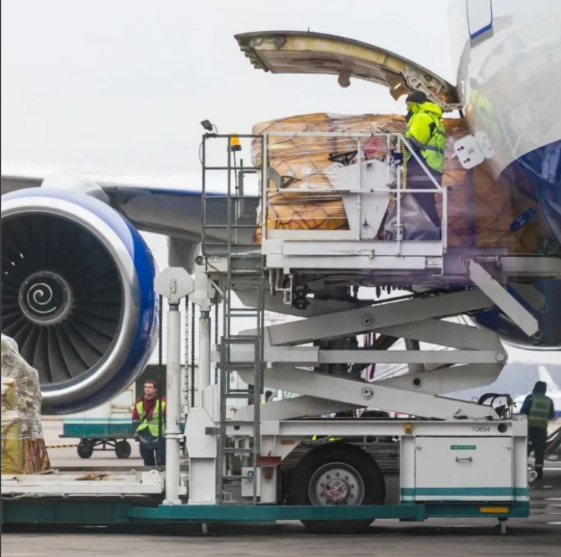In today’s fast-paced world, emergency medical care goes beyond the confines of local transport. The integration of commercial stretcher services, air cargo solutions, and ambulance services is reshaping patient transfers—both domestically and internationally. These services play a critical role in delivering timely, safe, and efficient medical transportation, especially for long-distance or critical transfers.
This article explores how commercial stretcher arrangements, specialized air cargo coordination, and comprehensive ambulance services are transforming medical logistics and improving patient outcomes.
What Is a Commercial Stretcher Service?
A commercial stretcher service refers to the provision of a medical-grade stretcher setup onboard commercial airlines for non-emergency, long-distance patient transport. These services are generally used when a patient is stable but still requires continuous medical care or monitoring during travel. The key highlights of this service include:
- Medical escort by trained paramedics or nurses
- Airline-approved stretcher setup in the aircraft cabin
- Coordination with airports and ground ambulance services
- Access to medical oxygen and emergency supplies onboard
This type of service is significantly more cost-effective than chartering a full air ambulance and is ideal for non-urgent repatriation or medical tourism needs.
Role of Air Cargo in Medical Transportation
When dealing with complex or international patient transfers, air cargo solutions come into play. Although typically associated with logistics and freight, in the context of medical transport, air cargo offers several critical capabilities:
- Transport of medical equipment and supplies: Ventilators, monitors, and other essential medical equipment can be shipped rapidly to meet patient needs during or before transport.
- Coordination of medical repatriation: Patients can be accompanied by medical staff and equipment on cargo-configured aircrafts, or equipment can be pre-shipped ahead of patient arrival.
- Emergency relief logistics: In mass casualty or disaster scenarios, air cargo carriers are vital in transporting emergency kits, stretchers, and field ambulances.
Air cargo ensures that all necessary support equipment is available wherever the patient is headed, thus reducing delays in medical care continuity.
Integrated Ambulance Services: The Missing Link
While commercial stretcher and air cargo solutions handle the long-distance segment of the journey, ambulance services act as the critical start and end points in patient transport. These services include:
- Ground Ambulances: BLS (Basic Life Support), ALS (Advanced Life Support), and ICU ambulances for stable or critical care patients.
- Airport Transfers: Specially equipped ambulances transfer patients directly from the airport to the hospital or vice versa.
- Coordination with Airlines and Embassies: For international travel, ambulance service providers often help with medical documentation, clearance, and end-to-end logistics planning.
This seamless coordination ensures a smooth transition for the patient from hospital to airport to the final medical facility.
How the Three Services Work Together
Let’s walk through a typical scenario where a critically ill patient in India needs to be transported to Germany for specialized treatment:
- Initial Ground Transport: An ICU-equipped ambulance picks up the patient from a hospital and transports them to the airport.
- Commercial Stretcher Setup: Onboard a commercial airline, a specially configured stretcher area is ready. The patient is monitored throughout the journey by medical personnel.
- Air Cargo Coordination: Meanwhile, specialized medical devices or even supporting personnel fly separately via cargo to ensure everything is in place on arrival.
- Receiving Ambulance Service: Once the plane lands, a local ambulance is on standby to take the patient to the destination hospital.
This level of integration between ambulance service, air cargo, and commercial stretcher arrangements ensures the patient experiences continuous, uninterrupted care.
Advantages of This Integrated Approach
- Cost Efficiency: Commercial stretcher services are significantly more economical compared to private air ambulances.
- Global Reach: Patients can be transported across continents with the right planning and logistics.
- Customizable Care: From ICU setups in ambulances to onboard oxygen support, the system can be tailored based on the patient’s medical condition.
- Timeliness: Proper planning with cargo and ground teams ensures minimal waiting times and smooth transitions.
Challenges and Considerations
Despite its many advantages, this system is not without challenges:
- Medical Clearance and Fit-to-Fly Documents: Patients must be assessed and approved for air travel.
- Airline Cooperation: Not all airlines offer commercial stretcher services, and slots may be limited.
- Customs and Immigration: Especially for international transfers, there can be delays due to documentation or clearance procedures.
- Coordination Across Borders: Time zone differences and varying healthcare standards can complicate the process.
This is why choosing an experienced provider who can manage end-to-end operations is crucial.
Conclusion
The fusion of commercial stretcher, air cargo, and ambulance services reflects the future of global medical transport. For patients who require non-emergency but medically necessary transfers over long distances, this integrated model provides a balance of safety, efficiency, and affordability.
With increasing globalization of healthcare and the rise of medical tourism, such services are no longer niche but essential. They offer a life-saving bridge for patients who need care beyond borders—and the comfort of knowing they’re supported every step of the way.


